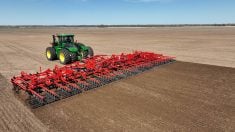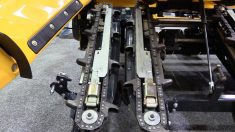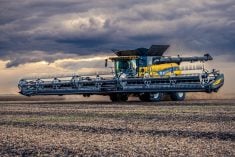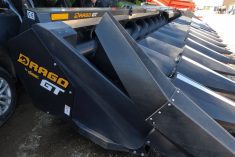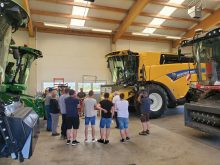It’s easy to forget about that straw chopper hanging off the back of a combine. So much discussion and effort these days seems to focus on getting material fed in at the front, that what happens to it when the combine coughs it out the rear often becomes little more than an afterthought.
But the problems created by improper residue distribution across a field can come back to haunt producers the following spring during seeding, especially those using no-till drills.
“As we move more and more into precision farming, the process of getting a great precision seeding season underway really starts at harvest,” says Trevor Thiessen of Redekop Manufacturing, a company that produces both OEM and aftermarket choppers. “If you’re not managing that residue at harvest, there is a chance germination in the spring will be hampered. These big precision drills that try to place seed and fertilizer in exactly the correct place only work if you have the field prepped correctly before you get in there. And fast, even germination starts with seedbed prep.”
Read Also
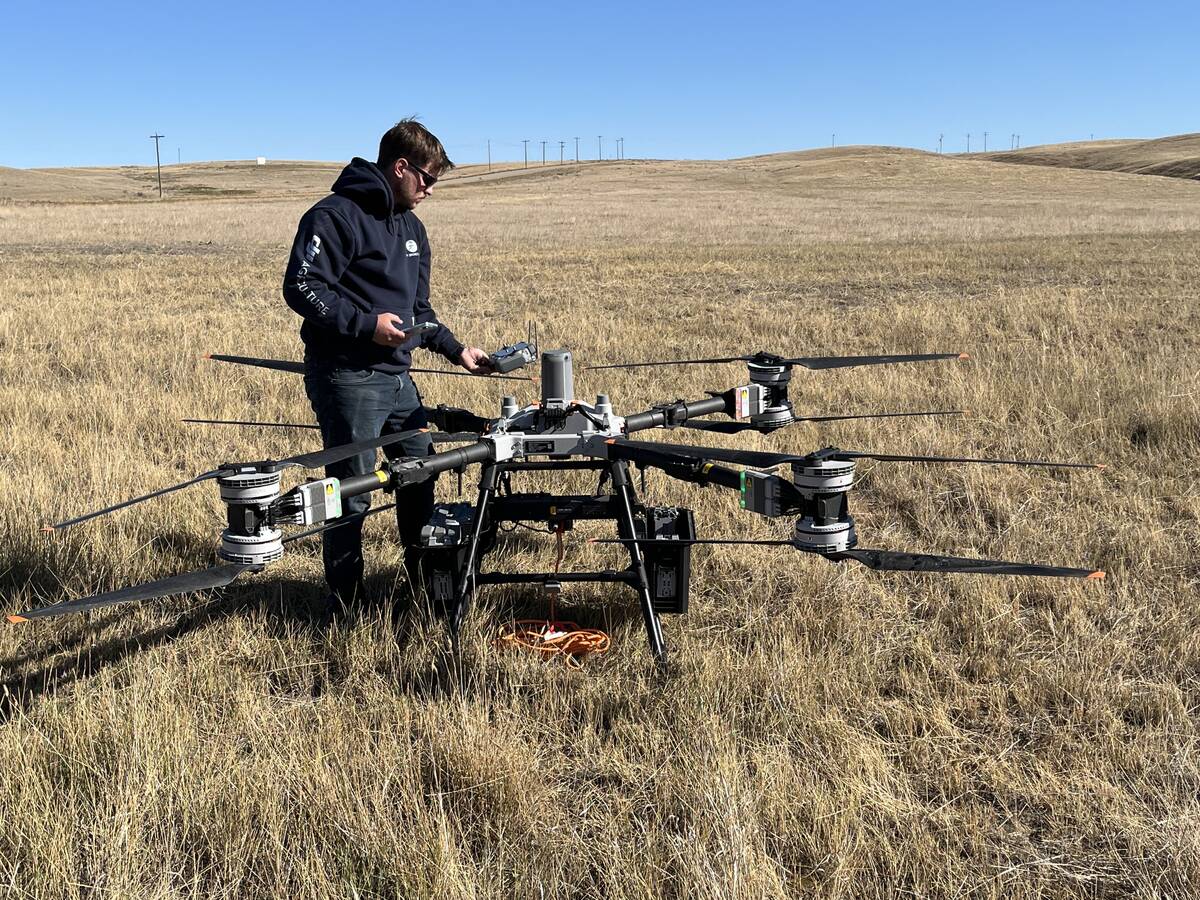
Farm-facing drone does the heavy lifting
Canadian distributor DJI Agriculture unveils its AGRAS T100 drone to western Canada’s producers for greater efficiencies in spraying and granular spreading in fields.
Theissen suggests three simple steps to maximize chopper performance.
1. Stay sharp
How often do you sharpen the knives on your combine chopper? Or should we ask, have you ever sharpened them? Maintaining a good sharp edge on knives is the first step producers should take, according to Theissen.
Producers should spend some time sharpening chopper knives each year before the season kicks off. Double edged knives can then be turned mid-way through the season to keep on cutting efficiently right through harvest.
“Before you spend any big dollars on a new combine or fixing the chopper on the back end, just look at the sharpness of your knives,” he advises. “It’s a relatively cheap thing. You can replace all the knives on your combine for about $1,000 at the high end. Dull blades have a significant impact on the performance of the combine, because it takes more fuel and more horsepower to chop. When you’re using extra horsepower to chop straw, you’re taking horsepower away from your threshing capacity and your harvesting speed starts to slow down.”

When straw doesn’t get cut, it doesn’t get spread, so the chopper needs to be able to cut the straw finely in order to spread it evenly. Both the rotating and stationary knives work together to get that job done.
“There are two sets of knives,” Theissen explains. “If you think of cutting with scissors, the stationary knives mounted on the chopper are kind of the opposite side of the scissors. If they’re not sharp, they’re just breaking or pinching the straw. Both sets of knives are important. You’d be shocked at how efficient a combine can become when you put a sharp set of knives on.”
2. Adjustments
The second step is to ensure the chopper is adjusted properly.
“We get calls from guys saying their straw isn’t spreading properly,” says Theissen. “And we just ask them, have you adjusted the height of your tailboard? In windy conditions you have to lower it a little bit. It’s a simple thing, but unfortunately it’s something some guys or their operators don’t think about.”
Also, deflectors inside the combine help route the flow of straw into choppers. If they aren’t delivering an even flow of material across the width of the chopper, distribution across the field will be uneven.
“Straw needs to feed into the chopper evenly,” he continues. “If you don’t feed your chopper evenly, it throws lots of straw on one side or the other. So you have to adjust that.”

3. Be a match maker
Can the chopper on your combine spread the full width of the header? If it can’t, you need a better chopper or a narrower header. They need to be matched.
“You need to make sure you get a chopper that can work with the header size,” says Theissen. “You have to spread the width of the cutter bar. Because if you don’t, what you’ll end up with are patches of residue that are going to cause you problems later on.”
“You still find a lot of larger farmers using a heavy harrow or tilling a field, sometimes twice, post harvest. You can move the long straw (with tillage), but you can’t move the finely cut straw and chaff. It falls too low onto the ground. So if you haven’t distributed it evenly, you’ll end up with concentrated chaff and straw in certain spots.”
“The heavy harrow can also leave bunches of straw. It’s just moving it around not breaking it down. It also has a significant cost. You don’t have to talk to too many precision or no-till producers to find stories of plugging or hair-pinning issues with excessive residue.”





